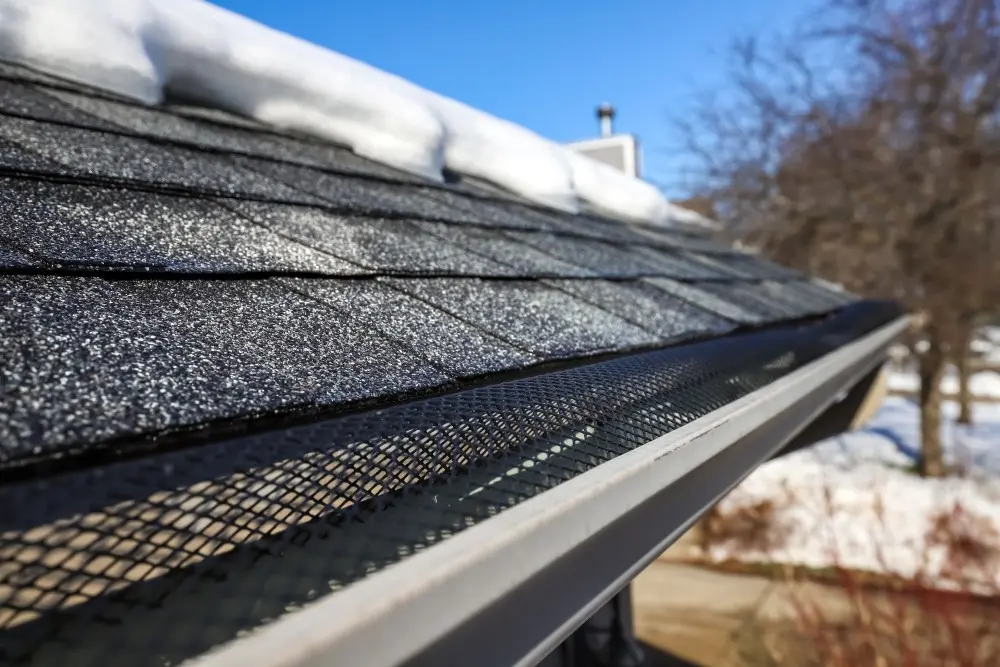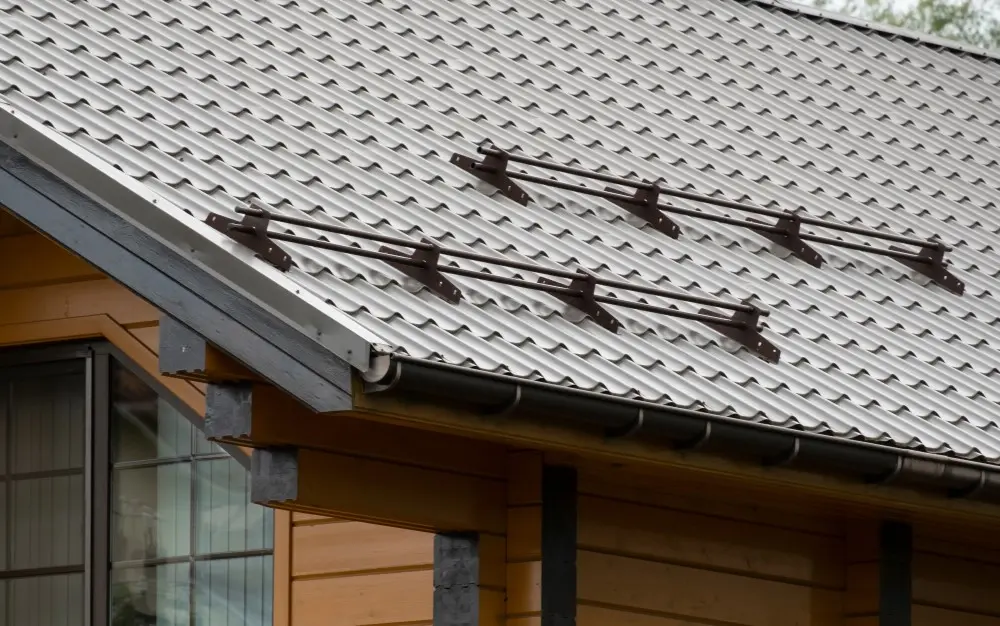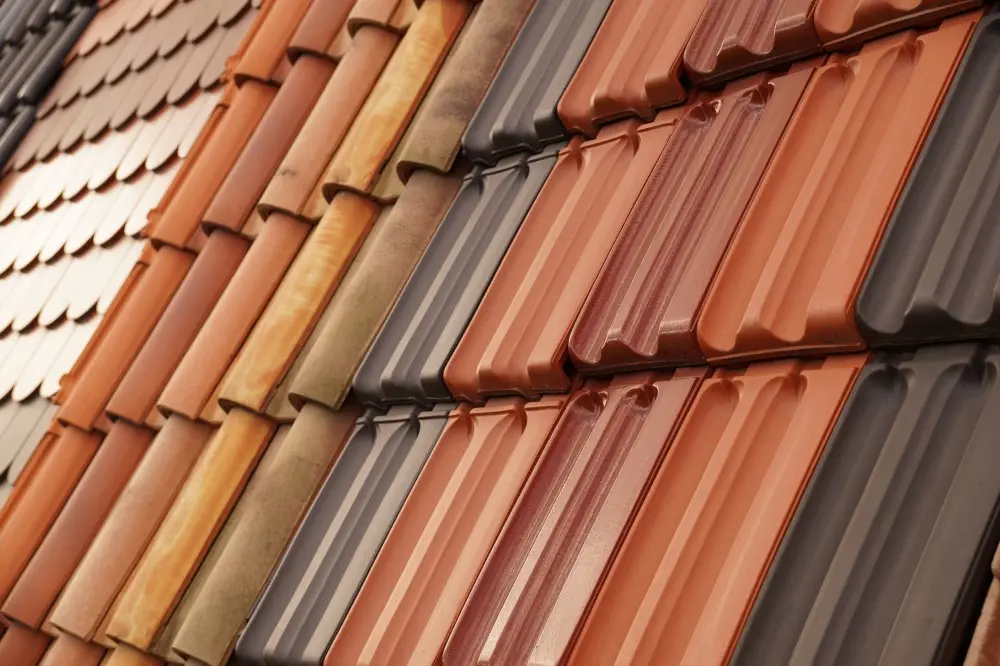Asphalt shingles deliver reliable protection at various price points, but these two types differ fundamentally in construction, durability, appearance, and performance during Tennessee's unpredictable weather.
Quality Exteriors has installed hundreds of roofs across Middle Tennessee since 2006, and we've seen how this decision plays out over decades. In this guide, we walk you through the differences so you can match the right shingles to your situation.

What Are Architectural Shingles?
Architectural shingles (also called dimensional or laminated shingles) are a modern form of asphalt shingles made from multiple layers of material. This design gives architectural roof shingles superior durability, wind resistance, and a longer lifespan. Their layered look mimics cedar shakes or slate, boosting curb appeal with less upkeep. Architectural shingles typically outperform 3-tab shingles in both style and strength, so they’re ideal for homeowners seeking value and resilience.
Pros of architectural shingles:
- Longer lifespan (25-50 years, depending on quality)
- Enhanced wind resistance (80-130 mph ratings)
- Better impact resistance against hail
- Architectural shingle warranties often include lifetime coverage
- Premium appearance increases property value
- Multiple material layers provide better protection
Cons of architectural shingles:
- Higher upfront architectural shingles cost
- Heavier weight requires an adequate roof structure
- More expensive installation labor
- Overkill for short-term rental property owners
- Not ideal for extremely tight budget situations
What Are 3-Tab Shingles?

Three-tab shingles are the original asphalt shingles that have protected homes for decades. Each shingle is a single strip with three tabs, creating a uniform appearance and clean lines. Made from asphalt-coated fiberglass with ceramic granules, this single-layer design is more affordable. It's a functional, proven option that’s ideal for basic roofing needs on a tight budget.
Pros of 3-tab shingles:
- Lowest cost per square foot for materials
- Lightweight nature reduces structural demands
- Faster installation saves on labor costs
- Suitable for mild climates with gentle weather
- Works well for DIY projects if you're experienced
- Makes sense for homes you'll sell soon
Cons of 3-tab shingles:
- Shorter lifespan (10-20 years typical)
- Lower wind resistance ratings (60-70 mph)
- Basic appearance doesn't enhance curb appeal
- Individual tabs are vulnerable to wind damage
- Average warranty coverage (20-30 years, prorated)
- Less impact resistance against hailstorms
Architectural Shingles vs. 3-Tab: Key Differences
The difference between 3-tab and architectural shingles goes deeper than price. Let's compare how these shingle types perform in the categories that impact your daily life and long-term costs.
Appearance
Visual impact matters more than many homeowners initially realize. Your roof covers roughly 40% of your home's exterior, making it a dominant feature, whether you notice it or not.
Three-tab shingles have a flat, uniform shape that creates clean but basic horizontal lines. They often give roofs a more dated or utilitarian look. On the other hand, architectural shingles feature dimensional cuts and random patterns that mimic wood shake, adding curb appeal and texture. They photograph better and make stronger first impressions, something real estate agents often highlight.
Construction
The construction methods create fundamentally different products. Three-tab shingles use a single layer of material that's roughly 1/8 inch thick. It’s a straightforward approach that lowers both cost and durability.
Architectural asphalt shingles use multiple layers, often making them three times thicker — around 3/8 inch. The top layer resists weather, while the base adds strength. Stronger adhesives bond the layers, resulting in a durable shingle with better long-term performance. When comparing 3-tab shingles vs. architectural shingles, this construction quality makes the difference between a good roof and a great one.

Durability and Lifespan
The true cost of your roofing project hinges on service life. Three-tab shingles typically deliver 10 to 20 years based on maintenance quality and climate conditions. In Middle Tennessee, for example, where summer heat, winter ice, and spring storms stress your roof constantly, most 3-tab installations trend toward the lower end of that range.
Architectural shingles generally last 25 to 30 years, with premium lines from manufacturers like GAF or Owens Corning reaching 50 years under optimal conditions. The increased durability comes directly from those multiple material layers that we previously mentioned.
Weather Conditions
Roofing materials face a range of weather challenges, especially in Tennessee. They must endure anything from high winds and UV exposure to hail and ice damage. Your shingle type plays a big role in how well your roof handles severe weather. Three-tab shingles are typically rated for winds up to 60–70 mph, but their individual tabs can lift easily during storms. It's not uncommon for sections to peel away in strong winds.
In contrast, architectural shingles typically withstand 80 to 130 mph winds, depending on the product. Many premium architectural shingles carry Class F (110 mph) or Class H (150 mph) ratings. Their laminated construction eliminates loose tabs, boosting both wind resistance and impact resistance. This is a clear advantage in harsh weather conditions.

Installation Processes
The installation method affects both your costs and final results. Three-tab shingles are faster to install thanks to their lightweight nature and simple design. The uniform shape means roofers can work quickly, reducing labor expenses. This straightforward installation process also makes them more suitable for DIY projects for those with roofing experience.
Architectural shingles need more care during installation due to their extra weight and dimensional cuts. Aligning the random pattern and cutting for valleys or ridges takes more time than with three-tab shingles. Still, professional roofers are trained for this, and the result is a roofing project with increased durability and a longer lifespan, making the added labor well worth it.
Weight
Bundle weight affects your roof structure and sometimes limits your options. Three-tab shingles are lighter, typically weighing 200-250 pounds per square (100 square feet). This reduced weight puts less stress on your roof framing, a factor that’s potentially beneficial for older homes with questionable structural support.
Architectural shingles weigh roughly 50% more at 300-400 pounds per square. For most homes built in recent decades, this additional weight poses no problem. The roof structure was designed to handle it. However, if you're replacing the roof on a historic home or a building with known structural issues, you'll need a professional assessment before choosing heavier architectural shingles.
Maintenance Requirements
Every roof needs maintenance, but maintenance needs vary between shingle types. Three-tab shingles demand vigilant attention to reach their maximum lifespan. The individual tabs curl as the shingles age and the asphalt binder becomes brittle. You'll need regular inspections to catch damaged shingles before water gets inside. Post-storm checks become critical because the lighter weight makes them more vulnerable.
Architectural shingles are more forgiving. The superior durability means individual shingles fail less often. Better wind resistance ratings and impact resistance translate to fewer repairs after typical weather. You'll still need regular maintenance to keep gutters clear and check for issues, but architectural shingles tolerate minor maintenance lapses better than their 3-tab counterparts.
#cta_here
Cost Comparison: 3-Tab Shingles vs. Architectural Shingles
We understand that budget drives many roofing decisions, so let's examine the numbers honestly. The difference between 3-tab and architectural shingles shows up immediately in material costs, but looks different when you calculate long-term value.
Here's where the math gets interesting. According to the JLC 2025 Cost vs. Value Report, an asphalt shingle roof replacement recoups approximately 68% of its cost when you sell your home. Architectural shingles typically recoup a higher percentage than 3-tab because buyers prefer their appearance and appreciate the longer remaining service life.
For rental property owners or homeowners selling within 5-7 years, 3-tab shingles often make financial sense as a functional solution. But for anyone settling into their home long-term, the numbers favor architectural shingles.
Which Shingle Type Is Right for Your Home?

After comparing construction, durability, cost, and performance, you're probably wondering which option matches your specific situation. Here's how to think through the decision:
- Limited budget and need the lowest possible cost → Choose 3-tab shingles as your most affordable option.
- Planning to sell within 5-7 years → Choose 3-tab shingles to save money on a short-term investment.
- Home is a rental property → Choose 3-tab shingles unless a premium appearance benefits your rental rates.
- Staying in your home 10+ years → Choose architectural shingles for better long-term value.
- Property sits in an exposed location or severe weather area → Choose architectural shingles for superior durability and higher wind ratings.
- Home is in a mild climate with gentle weather → 3-tab shingles may provide adequate protection to save money.
- Curb appeal and property value matter to you → Choose architectural shingles for a premium appearance.
- Want longer intervals between roof replacements → Choose architectural shingles with their longer lifespan.
In many cases, architectural shingles are the smarter choice, offering better durability, longer service life, and enhanced curb appeal that helps protect home value. In regions with varied weather, like Middle Tennessee, those benefits truly stand out.










